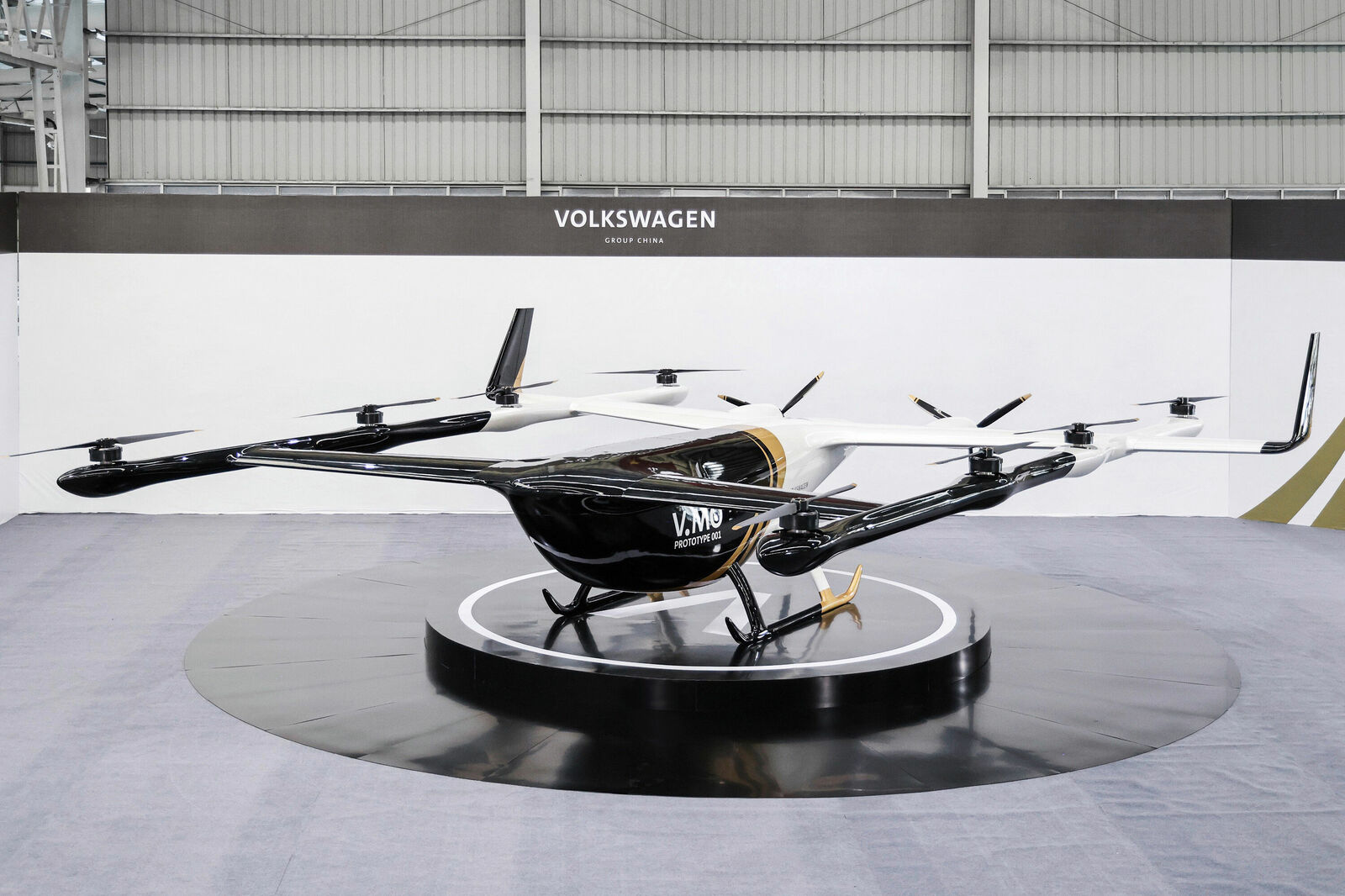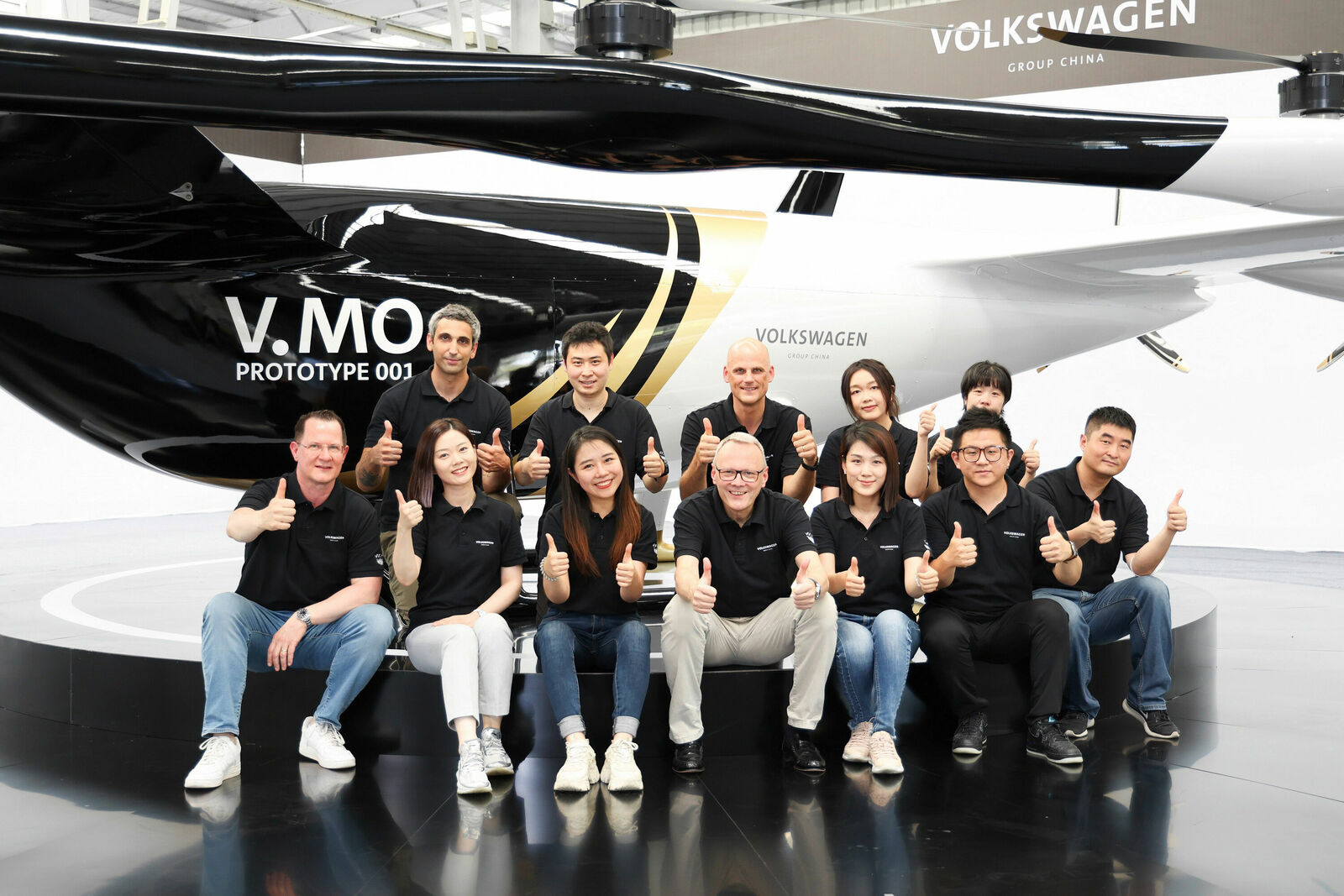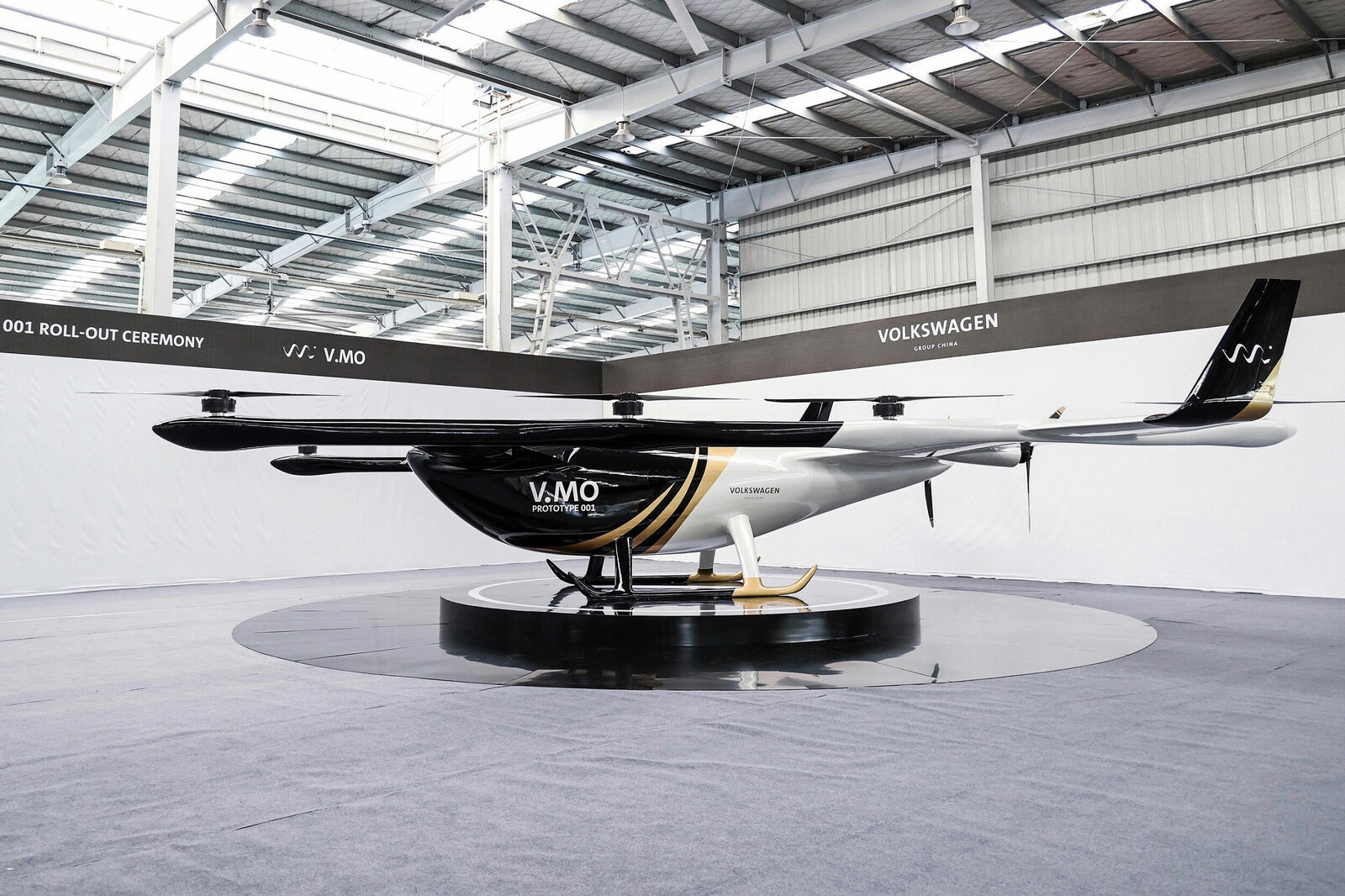The prototype concept is based on existing autonomous driving solutions and battery technology for emission-free mobility. With a luxury x-wing configuration of 11.2m in length and a span width of 10.6m, the model features eight rotors for vertical lift and two propellers for horizontal flight. The Group will conduct several flight tests later this year to optimize the concept and an improved prototype will undergo further advanced test flights by late summer 2023. In its final future iteration, the fully electric and automated eVTOL could eventually carry four passengers plus luggage over a distance of up to 200km.
Dr. Stephan Wöllenstein, CEO of Volkswagen Group China, said: “Through this pilot project, we are bringing Volkswagen’s long tradition of precision engineering, design, and innovation to the next level, by developing a premium product that will serve the vertical mobility needs of our future tech savvy Chinese customers. This is a pioneering project which our young team of Chinese experts started from scratch – they are working with new design concepts and materials while developing new safety standards, disrupting and innovating every step of the way. The launch of this stunning validation model – the V.MO – is the first of many remarkable milestones on our exciting journey towards urban air travel, and a perfect example of our ‘From China, For China’ mission. Our long-term aim is to industrialize this concept and, like a ‘Flying Tiger’, break new ground in this emerging and fast-evolving new mobility market.”
Volkswagen Group China is rapidly expanding local R&D and software expertise to respond faster to what customers want and significantly accelerate the pace of innovation. The Vertical Mobility project requires interdisciplinary and innovative thinking in a new field, and the Group formed a team of young, local experts to drive it forward. They have been supported by Chinese partners including Hunan Sunward Technology, a subsidiary of Hunan-based manufacturing group Sunward. The company specializes in aviation product development, sales and services and is a market leader in the light sport aircraft industry.
Urban air mobility is a fast-emerging market which aims to utilize air space for short- and medium-distance connections, especially above and between large cities. In China, it is set to play a significant role in the future of urban and intercity transportation in its congested megacities. In the first phase of its commercial use, V.MO is likely to be pitched as a premium product for high-net worth tech savvy Chinese customers, for example for VIP air shuttle services. eVTOL air vehicles will be able to transport passengers more quickly and efficiently than current conventional means of terrestrial transport and with greater flexibility. As the Vertical Mobility project develops, Volkswagen Group China will work with the relevant Chinese authorities to achieve certification.
Notes to Editors
- Further information on this project and visual materials will be available in the next days on our media website: http://www.mediacenter.volkswagengroupchina.com.cn/











